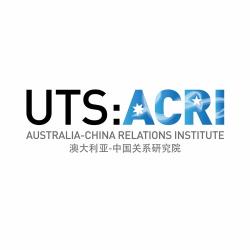Australia and China's shared history - with Robert Macklin
The Australia-China relationship goes back almost 200 years. Who were the first Chinese migrants to Australia, and how were they treated? Who was ‘Morrison of Peking’ and what role did he play in promoting bilateral understanding? Why did Australia decide not to recognise the People’s Republic of China in 1949, and what factors led to the establishment of diplomatic relations in 1972? What different approaches have Australian Prime Ministers taken towards China? Journalist and writer Robert Macklin, author of 'Dragon and Kangaroo: Australia and China’s shared history from the goldfields to the present day' (Hachette, 2017) joins Bob Carr, Director of the Australia-China Relations Institute (ACRI) at the University of Technology Sydney to discuss the history of the Australia-China relationship and the people who contributed to its development.
Guest: Robert Macklin, author, Dragon and Kangaroo: Australia and China’s shared history from the goldfields to the present day (Hachette, 2017)
Host: Bob Carr, Director, Australia-China Relations Institute (ACRI), University of Technology Sydney
The Australia-China relationship goes back almost 200 years. Who were the first Chinese migrants to Australia, and how were they treated? Who was ‘Morrison of Peking’ and what role did he play in promoting bilateral understanding? Why did Australia decide not to recognise the PRC in 1949, and what factors led to the establishment of diplomatic relations in 1972? What different approaches have Australian Prime Ministers taken towards China?
Robert Macklin joins Bob Carr to discuss the history of the Australia-China relationship and the people who contributed to its development.
Many early interactions between Australians and Chinese were marked by violence. A direct line can be drawn between restrictive measures against Chinese immigration, introduced following widespread uprisings against Chinese miners in the late 19th century, and the enactment of the White Australia Policy in 1901.
The racism faced by Chinese-Australians led many of them to return to China. A notable example is Pamela Tan, who was born in Australia but moved to China following the establishment of the PRC in 1949. However, following the abolition of the White Australia Policy, Pamela returned to Australia and was welcomed by the community.
Australia wavers between acceptance and rejection of China’s rise. Australia may currently be in a ‘rejection’ phase, but younger generations are more open to the notion of Australia as an Asia-Pacific nation rather than ‘Western’ nation.

